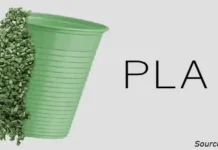Last Updated on July 8, 2023 by
The average swimming pool contains between 18,000 and 20,000 gallons of water. So, it’s easy to see how a small leak can soon become a big problem. Although your pool installer will go to great lengths to ensure their construction stays intact and leak-free for as long as possible. Yet, almost every pool will experience issues with leaks eventually. Pool sealing is the best way to repair these mishaps and ensure your pool stays watertight for years to come.
Table of Contents
What Causes Pool Leaks?
The structures that hold water inside your in-ground pool come into contact with both groundwater and chlorinated water inside your pool. These liquids gradually wear away at these concrete surfaces, leading to wear and tear over time.
An above-ground pool faces extra challenges from the sun’s rays, which will erode the plastic walls of the pool eventually.
Broken plumbing is another major player in pool leaks. A leaking pipe quickly saturates the ground surrounding the pool, leading to further pressure on the pool wall.
Loose fittings can also cause leaks in the surroundings and cause major issues.
Sometimes small cracks in the tile or stone surrounding your pool can lead to deeper issues, too. A neutral pool tile sealer can help prevent these cracks from forming in the first place.
Pool Sealing Basics
In most cases, your pool installer will treat your pool with a pool sealant that’s good for many years. You’ll usually only need to step in when you notice a leak forming in or near your pool.
These are some of the most common fixes when it comes to pool leaks:
Fixing a Leaking Pool Pipe Connection
This is a quick and easy fix using a silicone sealant and some Teflon tape.Simply unscrew the pipe and apply the silicone sealant to the ‘male’ surface. Wrap it with Teflon tape and put everything back together again.
If you suspect an underground leak, call a pool repair specialist.
Fixing a Leak in Your Pool Liner
You can fix a tear in your pool liner with a vinyl patch kit. You can buy these kits from a hardware store or pool supply store.
Simply choose the type of peel-and-stick waterproof patch you want and apply it according to the instructions.
Fixing a Crack in a Concrete Pool
Fortunately, these types of leaks are rare. You’ll need to ensure the offending area is clean and dry before you patch it, so empty your pool, so the water is below the crack before you get started.
You can use one of two types of sealant for your concrete pool. These are:
- Epoxy – a two-part mix
- Polyurethane Foam – an expanding foam
You can even use some types of epoxy underwater for added convenience, but this substance doesn’t swell like polyurethane foam, so it’s not suited to large cracks.
Keep Your Home in Great Shape
Quick action can help stop your pool from leaking and prevent major issues stemming from pool leaks. So, check your pool regularly and apply a pool sealer at the first sign of cracks and leaks.
Pool sealing is an important aspect when it comes to keeping your garden and home in pristine condition. For more home maintenance tips and tricks, browse some of the other articles on our website.
Apart from that, if you are interested to know about Easy pool maintenance tips then visit our Lifestyle category.


























